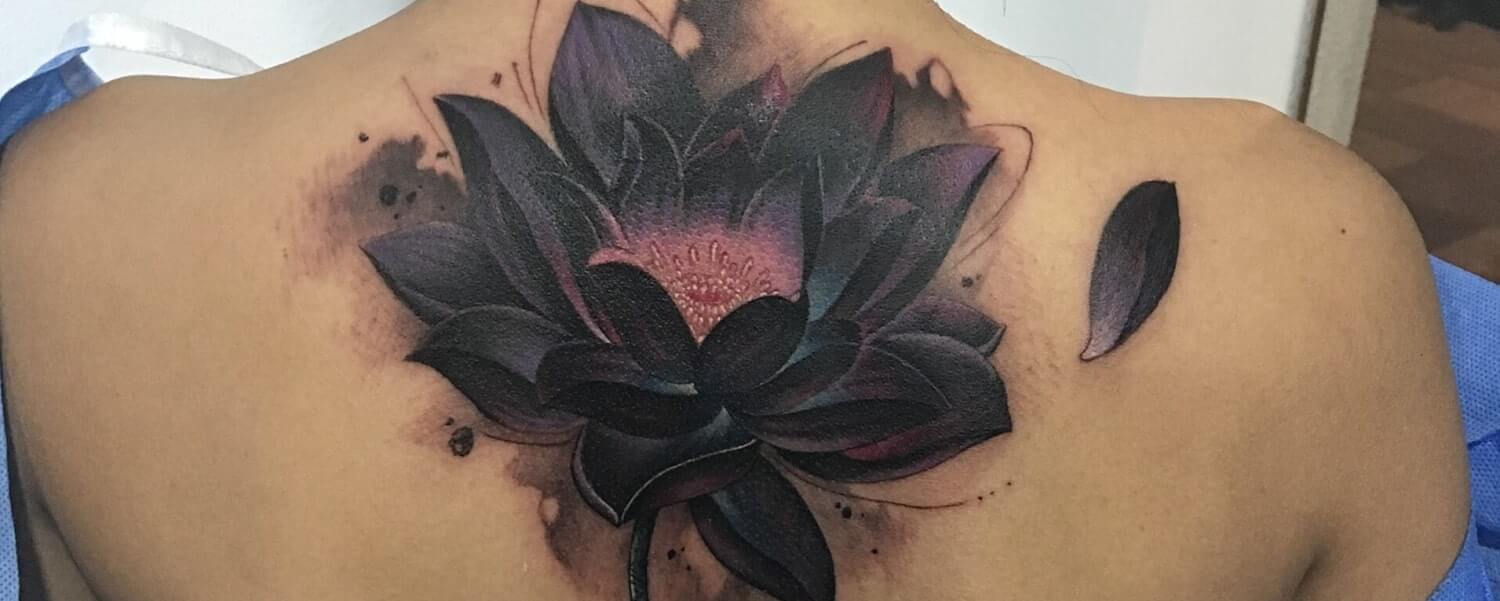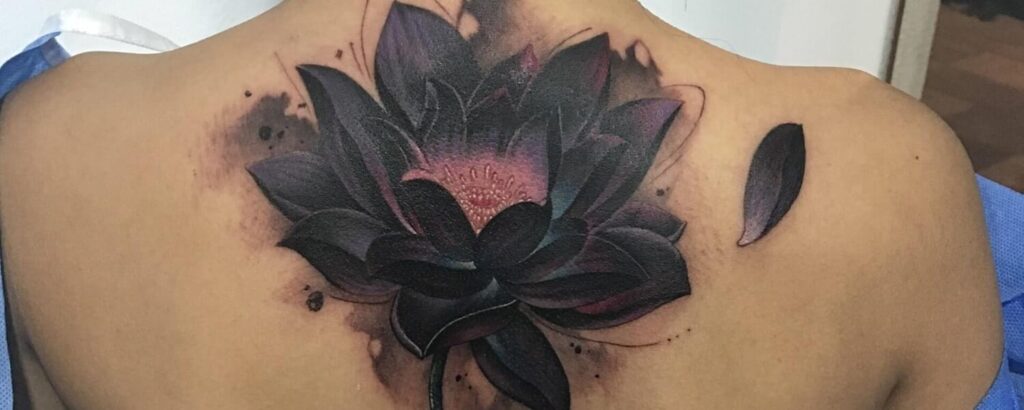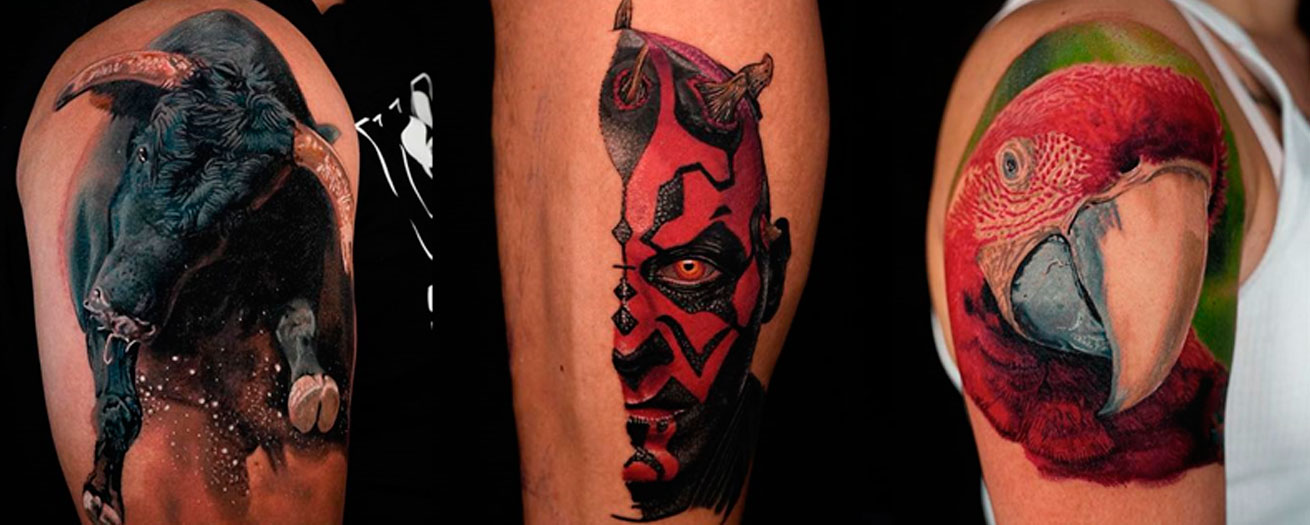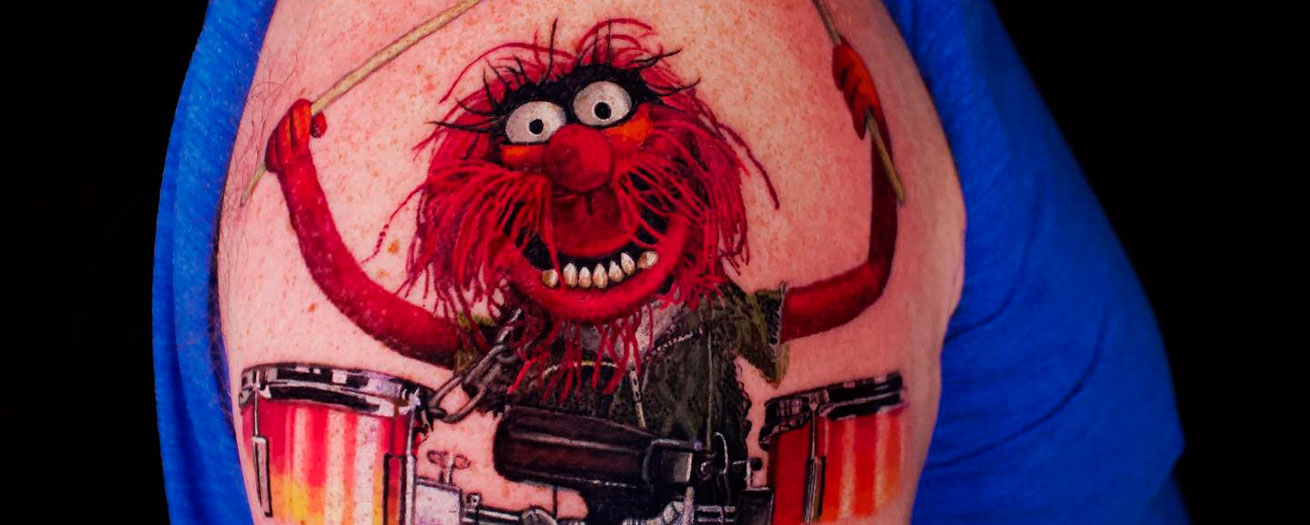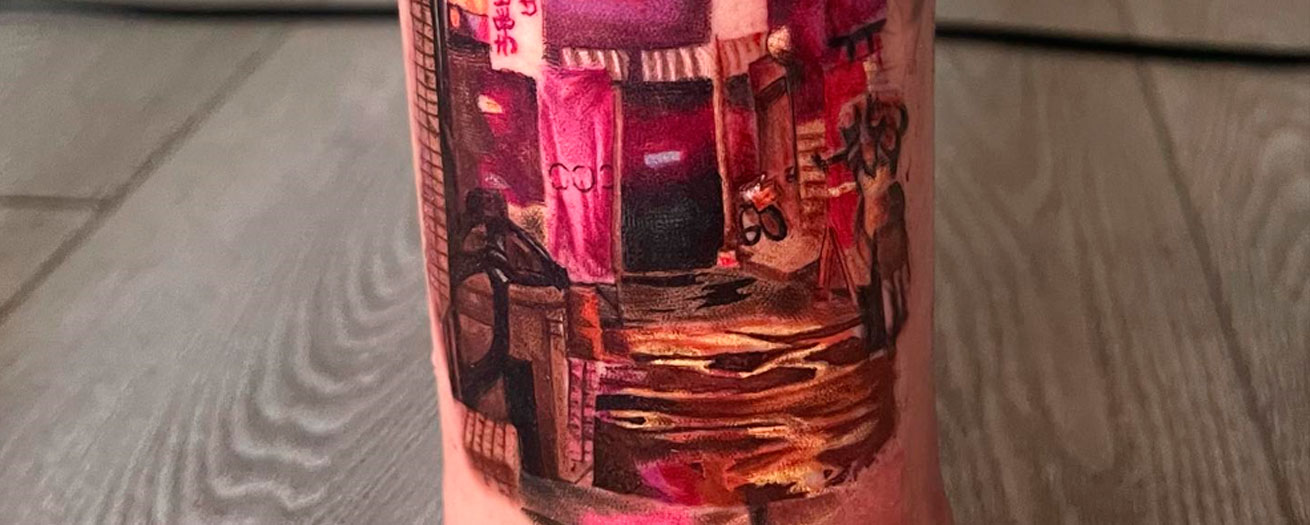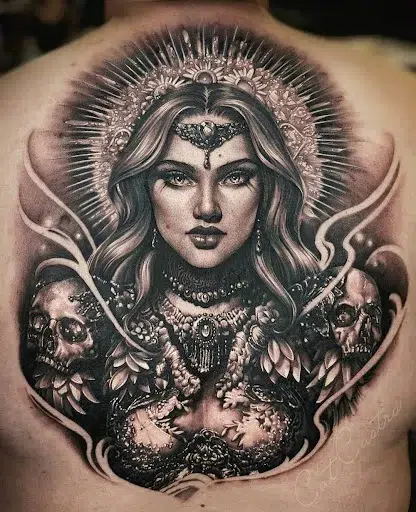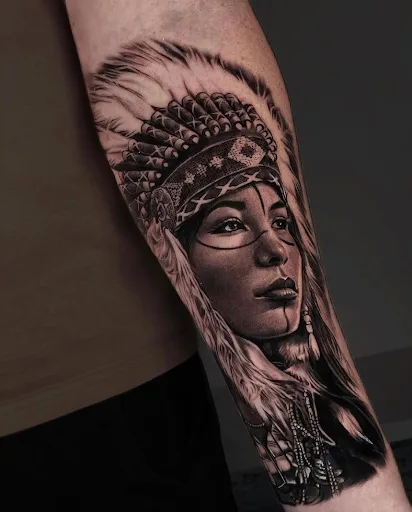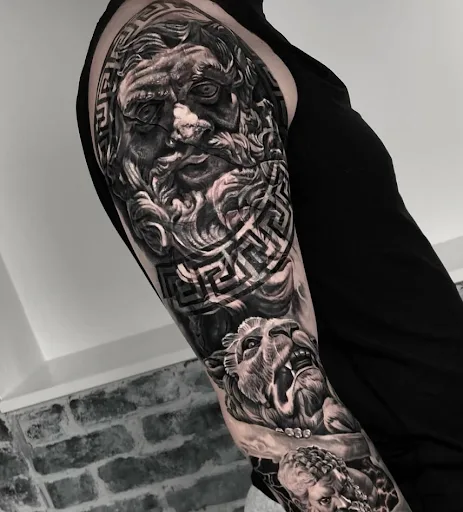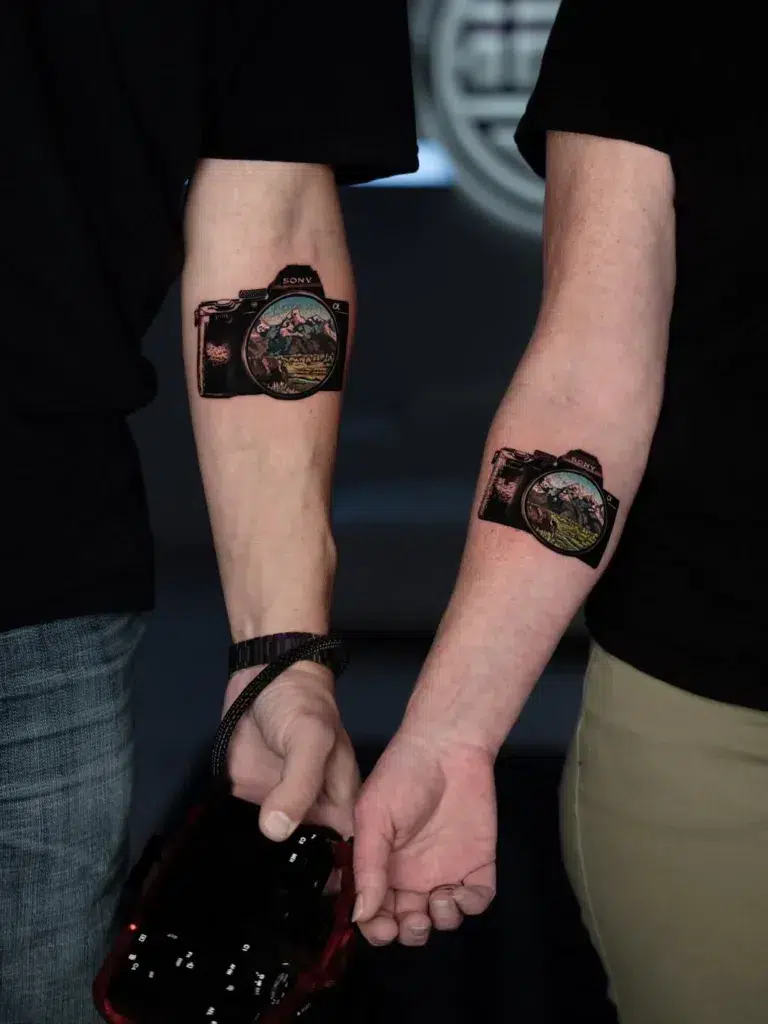Does your once vibrant tattoo now appear faded or distorted, losing its original appeal and sharpness? Worry not, as there’s a procedure that can restore it.
A tattoo touch-up can reinvigorate you. Read on to learn more about why tattoos need touch-ups, which tattoos are eligible for, and the fascinating process that can revive the vibrancy of your body art.
What Is a Tattoo Touch-Up?
A tattoo touch-up refers to refining and enhancing an existing tattoo to restore its original vibrancy and sharpness. Like a painter adding a final layer of detail to a masterpiece, tattoo touch-ups are about perfecting the initial design and maintaining its longevity.
This procedure involves a tattoo artist reviewing the initial design with new ink to sharpen the lines, bolster the color, or adjust the details. Ultimately, the touch-up means enhancing the overall aesthetic appeal of the tattoo.
Which Tattoos Are Eligible For Touch-Ups?
Contrary to what one might assume, not all tattoos are suitable for touch-ups. The eligibility of a tattoo for touch-ups largely depends on its condition, the quality of the original artwork, and age.
The best tattoo shops often advise that tattoos with significant fading, blurry lines, or lacking detail are the most appropriate candidates for touch-ups. However, if the tattoo is severely scarred, overly stretched due to weight gain or loss, or if the design is not easily distinguishable, it might require a complete overhaul or cover-up instead of a simple touch-up.
Why Do Tattoos Need Touch-Ups?
There are several reasons why a tattoo may need a touch-up. For some, it could be a desire to revive the design’s original vibrancy; for others, it could be necessary due to various factors such as fading, distortion, or infection. Getting a tattoo touch-up is often seen as an essential step in preserving the beauty and integrity of the tattoo over time.
The Tattoo Is Fading
One of the most common reasons for needing a tattoo touch-up is fading. Over time, the harsh impact of sun exposure, the body’s natural exfoliation process, and the ink quality can lead to a tattoo fading. When this happens, the colors lose their vibrancy, making the design dull and lifeless. Touch-ups can help restore the tattoo to its original glory, bringing back its bright colors and clear, sharp lines.
Placement: The tattoo loses the initial shape
Tattoos placed in areas with high mobility and elasticity, like elbows, knees, or the waistline, often warp or distort over time. Weight fluctuations, muscle gains or losses, and aging skin can cause distortions. In such cases, you should touch up a tattoo to restore its original shape and design.
Infected Tattoo
An infected tattoo may alter the tattoo’s appearance, cause color changes, or result in patchy areas where the ink does not hold. Treating an infected tattoo promptly is crucial to prevent more severe health complications. Once healed, it might be necessary to perform a tattoo touch-up to correct any alterations caused by the infection.
The Tattoo Is Pretty Old
Over the years, as skin ages and loses elasticity, older tattoos may blur or lose their initial clarity. In these cases, tattoo touch-up can be a valuable procedure to help rejuvenate the design, sharpen blurry lines, and reinvigorate dull colors. An experienced artist can breathe new life into an old tattoo, making it look as vibrant as the day you got it.
Do Tattoo Touch-Ups Hurt?
Tattoo touch-ups involve going over the original design with fresh ink to brighten and enhance its appearance, similar to getting a new tattoo.
If you’ve ever wondered, “Do tattoo touch-ups hurt?” the answer is yes, but typically less than the initial inking. This is because the skin is already familiar with the sensation, and the tattoo artist does not usually need to go as deep as the first time. The pain level also depends on the location of the tattoo and individual pain tolerance.
How Long Should You Wait Before a Tattoo Touch-Up?
A common question among tattoo enthusiasts is: “How long should you wait before a tattoo touch-up?” The answer to this varies depending on a variety of factors. Tattoo artists recommend waiting until the tattoo has fully healed before considering a touch-up. This is usually between 1 to 2 months but can be longer depending on how your body heals.
However, a good rule of thumb is to pay close attention to how your tattoo evolves during the healing process. You should contact your tattoo artists if you notice excessive fading or uneven color during this period. Keep in mind that a touch-up is not always necessary. If you and your artist planned the design well and you’ve been careful with aftercare, your tattoo might heal perfectly on the first go.
How Long Do Tattoo Touch-Ups Take to Heal?
Just as with new tattoos, the healing time for a tattoo touch-up varies. It should take around two weeks for the skin’s surface to heal and about a month for the skin to regenerate fully. However, touch-up means that only specific areas of your tattoo need to be revised, and these are usually smaller areas.
Therefore, touch-ups heal faster than initial tattooing due to their typically smaller size. It’s always best to check with your tattoo artist for personalized advice.
Can you prevent a tattoo touch-up?
You can often prevent a tattoo touch-up by taking good care of your tattoo from the start. Protecting it from sunlight, applying a suitable moisturizer, and avoiding scratching or picking at the tattoo are all critical for maintaining its quality. Also, choosing a skilled tattoo artist who uses high-quality ink will contribute significantly to the durability of your tattoo. However, remember that all tattoos will fade slightly over time, and occasional touch-ups might be necessary to keep them looking their best.
Should I use a tattoo cream after a tattoo touch-up?
The use of tattoo cream after a touch-up is highly recommended. During the tattoo consultation, your tattoo artist should advise you on the best aftercare products for your skin type and tattoo. Tattoo creams, specifically those focusing on healing and maintenance, can expedite healing and help keep the colors vibrant. Applying cream is an integral part of the process when you “touch up a tattoo“, and it should not be overlooked.
While the need for a tattoo touch-up can vary based on many factors, it is vital to maintaining your body art’s appearance.
Whether you’re touching up due to personal preference, a change in the tattoo’s appearance, or the natural aging of the tattoo, understanding the process will help you navigate it smoothly. Always communicate openly with your artist, take good care of your skin, and your tattoo can remain vibrant for years.


